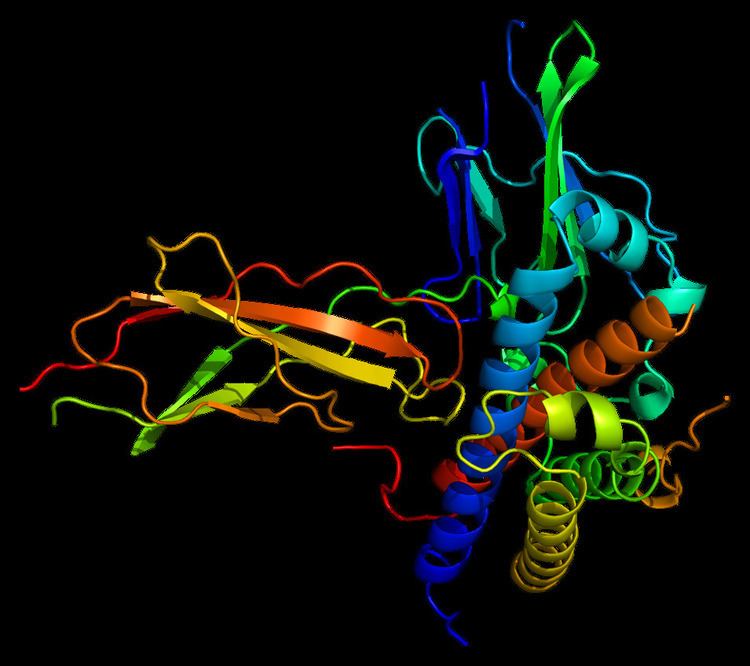Entrez 2690 | Ensembl ENSG00000112964 | |
 | ||
External IDs OMIM: 600946 MGI: 95708 HomoloGene: 134 GeneCards: GHR | ||
Growth hormone receptor is a protein that in humans is encoded by the GHR gene. GHR orthologs have been identified in most mammals.
Contents
This gene encodes a protein that is a transmembrane receptor for growth hormone. Binding of growth hormone to the receptor leads to receptor dimerization (the receptor may however also exist as a pre-assembled non-functional dimer ) and the activation of an intra- and intercellular signal transduction pathway leading to growth. A common alternate allele of this gene, called GHRd3, lacks exon three and has been well-characterized. Mutations in this gene have been associated with Laron syndrome, also known as the growth hormone insensitivity syndrome (GHIS), a disorder characterized by short stature (proportional dwarfism). Other splice variants, including one encoding a soluble form of the protein (GHRtr), have been observed but have not been thoroughly characterized. Laron mice (that is mice genetically engineered to carry defective Ghr), have a dramatic reduction in body mass (only reaching 50% of the weight of normal siblings), and also show a ~40% increase in lifespan.
Interactions
Growth hormone receptor has been shown to interact with SGTA, PTPN11, Janus kinase 2, Suppressor of cytokine signaling 1 and CISH.
Evolution
The GHR gene is used in animals as a nuclear DNA phylogenetic marker. The exon 10 has first been experienced to explore the phylogeny of the major groups of Rodentia. GHR has also proven useful at lower taxonomic levels, e.g., in octodontoid, arvicoline, muroid, murine, and peromyscine rodents, in arctoid and felid carnivores, and in dermopterans. Note that the GHR intron 9 has also been used to investigate the mustelid and hyaenid carnivores phylogenetics.
Antagonists
Growth hormone receptor antagonists such as pegvisomant (trade name Somavert) are used in the treatment of acromegaly. They are used if the tumor of the pituitary gland causing the acromegaly cannot be controlled with surgery or radiation, and the use of somatostatin analogues is unsuccessful. Pegvisomant is delivered as a powder that is mixed with water and injected under the skin.
